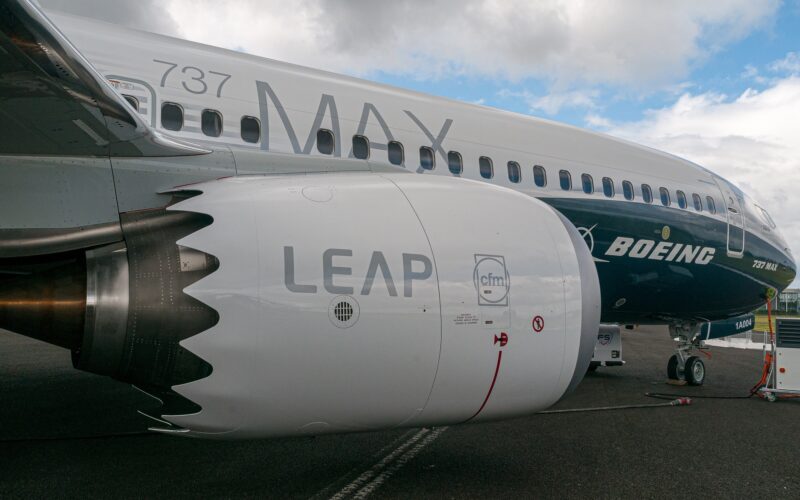The United States (US) Federal Aviation Administration (FAA) issued a final rule Airworthiness Directive (AD) to address compressor stalls on the CFM LEAP 1-B engine, used exclusively on the Boeing 737 MAX aircraft.
The FAA was prompted to issue the AD due to “multiple aborted takeoffs and air turn-backs (ATBs) caused by high-pressure compressor (HPC) stall, which was induced by high levels of non-synchronous vibration (NSV)”.
After an investigation by CFM International, a joint venture between General Electric (GE) Aviation and Safran Aircraft Engines, the manufacturer of the LEAP-1B engine concluded that “wear on the No. 3 bearing spring finger housing can lead to high levels of NSV”.
To comply with the directive, airlines that have equipped their Boeing 737 MAXs with certain version of the LEAP-1B engine will have to conduct “repetitive calculations of the oil filter delta pressure (OFDP) data and, depending on the results of the calculation, replacement of the No. 3 bearing spring finger housing”. The AD also prohibits operators from installing engines with an affected No. 3 bearing spring finger housing on aircraft that already have defective housing.
Loss of power at a critical phase
“The unsafe condition, if not addressed, could result in engine power loss at a critical phase of flight such as takeoff or climb, loss of thrust control, reduced controllability of the airplane, and loss of the airplane,” the FAA argued.
The directive is effective June 13, 2023, and notes that airlines will have to calculate the OFDP data before an engine reaches 125 flight cycles (FC) since new, “but not before accumulating 75 FCs since new, or within 50 FCs after the effective date of this AD, whichever occurs later”. Afterwards, and “at intervals not to exceed 100 FCs from the last calculation of the OFDP data, and until the affected No. 3 bearing spring finger housing accumulates 1,000 FCs since new”, operators are mandated to calculate the OFDP data once again.
If during the data calculations the OFDP data exceeds limits, an operator will have to replace the No 3. bearing spring finger housing within 25 FCs.
According to the FAA’s estimates, eight engines that are currently installed on aircraft registered in the US will be affected, with the OFDP data calculation costing $85 for a single work hour. If a No 3. Bearing spring finger housing must be replaced, however, the parts will cost $64,590, while labor is estimated to be at least $1,445 for a total of $66,035 per aircraft engine.
Four parties commented on the AD, including American Airlines, Lynx Air, an anonymous commentator, and Air Line Pilots Association, International (ALPA). ALPA and the anonymous commentator agreed with the AD without any comments, while American Airlines and Lynx Air provided some feedback.
The comments from the two airlines, even though Lynx Air has an Air Operator’s Certificate (AOC) in Canada, included but were not exclusive to requests to remove the installation prohibition of an engine with an affected housing, revision of estimated costs, and Lynx Air asking the FAA to mandate CFM international to monitor and calculate the OFDP data.
“Except for minor editorial changes, and any other changes described previously, this AD is adopted as proposed in the NPRM. None of the changes will increase the economic burden on any operator,” the FAA concluded.

